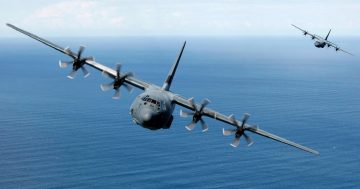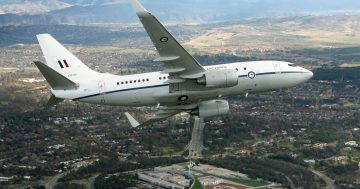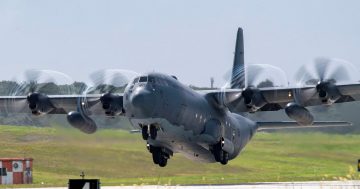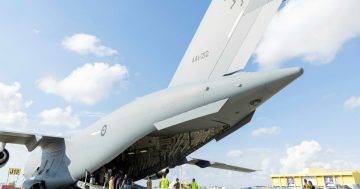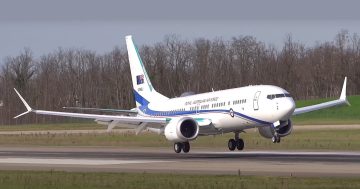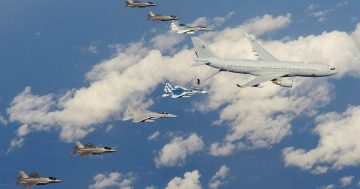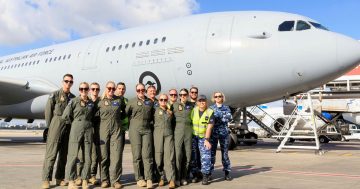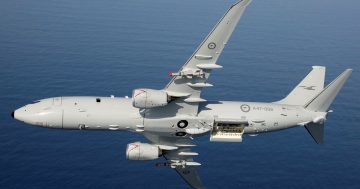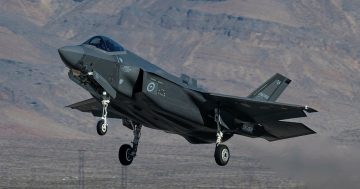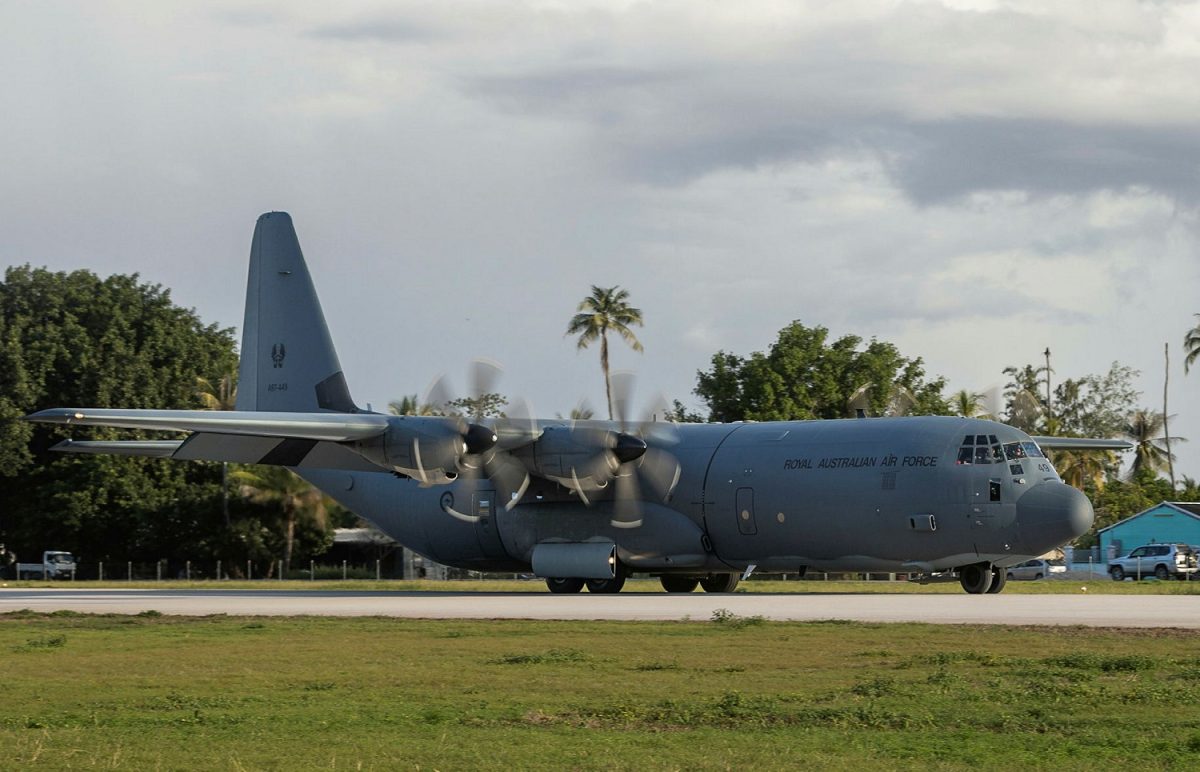
An RAAF C-130J-30 Hercules carrying ADF bomb-disposal experts arrives at Nauru to deactivate an unexploded WW2 bomb. Photo: ADF.
The government has confirmed the acquisition of a new batch of Lockheed Martin C-130J-30 Hercules transports for the Royal Australian Air Force.
In details released by the government on Sunday night (23 July), only the new Hercules are mentioned for now. But numerous sources have said the government will also soon make an announcement of the acquisition of two extra Airbus KC-30A Multi-Role Tanker Transports (MRTT).
The Hercules announcement has been expected for some time under the Commonwealth’s Project 7404, but the originally expected number of 24 airframes which were approved for sale by the US Congress in November 2022 has now been reduced to 20.
The new ‘Hercs’ will replace 12 C-130J-30s currently operated by 37 Squadron at Richmond in Sydney. These 12 aircraft entered service in 1999, and have borne the brunt of the RAAF’s tactical airlift duties since the retirement of the older C-130H models in 2012.
At a cost of $9.8 billion for just 20 aircraft to be delivered from 2027, the cost seems to be exorbitantly high. The new-build aircraft will differ in having more advanced cargo handling systems; updated flight control software, navigation systems, and cockpit avionics; advanced radar, optical, and electronic support measures sensors; and an integrated electronic warfare system.
The requirement for additional KC-30As stems from April’s Defence Strategic Review, which – while it didn’t specifically mention the acquisition of additional tankers – recommended additional air-launched long-range strike capabilities be acquired.
Described as ‘force multipliers’, airborne tankers have the ability to extend typical fighter aircraft missions from between two and three hours, to out beyond 10 hours. This allows combat aircraft such as the RAAF’s F-35A fighter, F/A-18F strike, and EA-18G electronic attack aircraft armed with long-range strike weapons to operate much further away from their bases and thus, closer to their intended targets.
The KC-30A MRTT is a converted Airbus A330-200 airliner that can offload more than 100 tonnes of fuel in flight to a number of different Australian and allied aircraft types. The fuel is transferred via two wing-pod mounted hose and drogue systems, or a single fuselage-mounted boom system. In transport mode, the MRTT is capable of carrying up to 275 passengers on the main deck, and 34,000kg of freight on pallets in its underfloor cargo hold.
Australia was the first customer for the MRTT. In 2004 an initial five aircraft were ordered under Project AIR 5402 and, after some developmental difficulties, these entered service in 2009. Australia’s first MRTT was modified by Airbus at Madrid in Spain from a new-build ‘green’ (unpainted) A330, while the other four were flown to Australia as green aircraft and modified by Qantas Defence Services (later Northrop Grumman Australia) at Brisbane Airport.
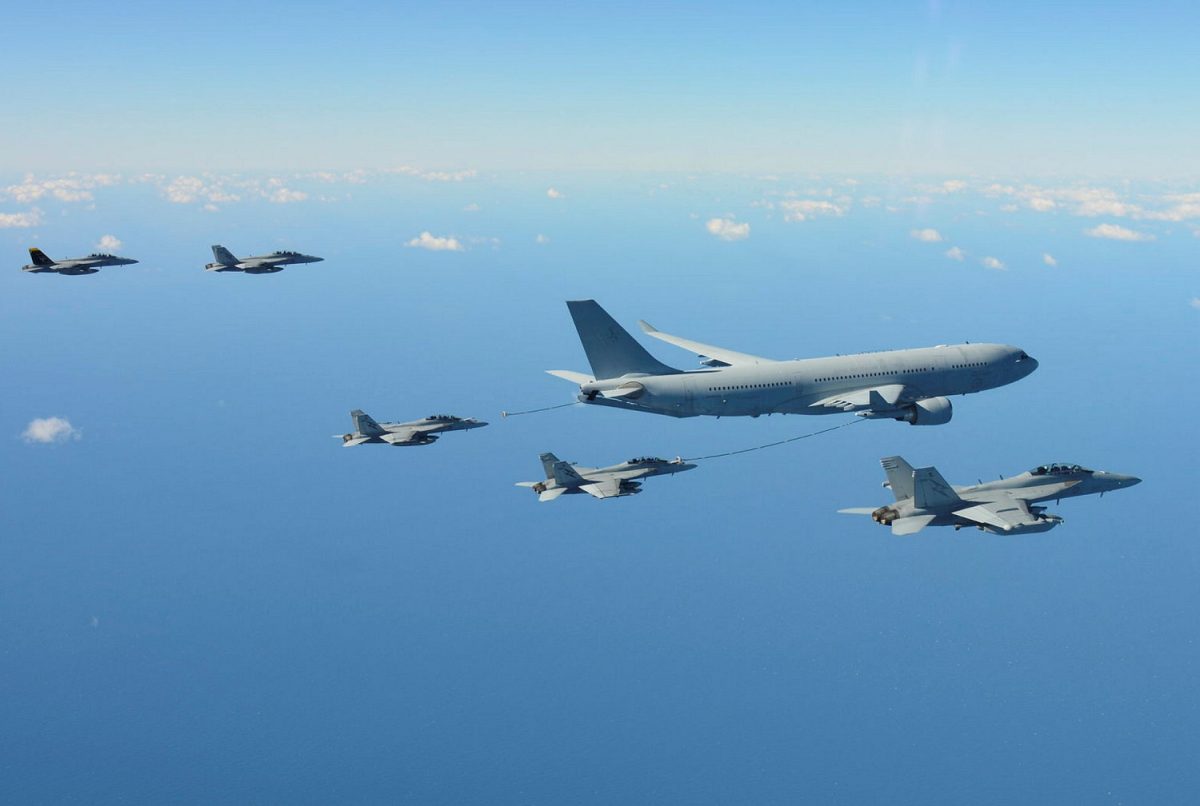
An RAAF KC-30A refuels two F/A-18F Super Hornets, while two others and an EA-18G Growler await their turn. Photo: ADF.
In 2015, the government announced that two additional KC-30As would be acquired, one of which has a VIP-configured forward passenger cabin suitable for long-range overseas Prime Ministerial visits. These aircraft are former Qantas/Jetstar airliners and were also modified by Airbus in Spain, and entered service in 2018 and 2019.
The KC-30As are based at Amberley near Ipswich in Queensland, and are operated by No 33 Squadron. Northrop Grumman Australia is responsible for the sustainment and maintenance of the KC-30s at Amberley and at its Brisbane Airport facility.
It is not known where the donor A330 aircraft will be sourced from, nor where they will be modified. If the aircraft are former airliners it is possible they will also be former Qantas jets, some of which have been in storage since the pandemic. From a configuration point of view, former Qantas jets would be easier to integrate into the larger fleet because, even though they are older airframes, they were manufactured around the same time as the RAAF’s MRTTs, so they will have similar aged components and major systems installed.
But if Australia buys new A330s for conversion, the introduction of two 20-year younger airframes may cause some configuration management issues for the RAAF, and may even lead them to becoming a sub-fleet within the squadron. But, introducing newer jets may allow their operational flying hours to be carefully managed so that the older aircraft and the overall fleet life can be extended.
The Northrop Grumman facility in which four MRTTs were modified at Brisbane has recently been substantially upgraded in recent years and may be able to cater for the modification work, but a skilled workforce will need to be trained or imported from Spain, and alternative facilities will need to be found for heavy maintenance of the current aircraft.












